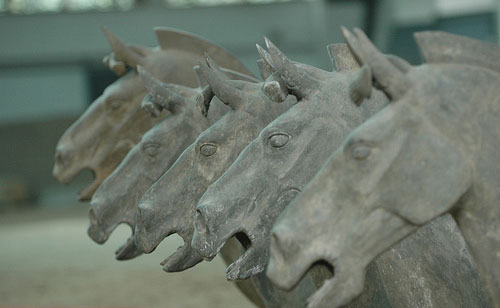
It seems I’ve turned Saturday into a day for horse art. I’ve been enjoying my recent interviews with horse artists which prompted me to take a look at equine art back through time.
That’s Some Old Stuff…
Most cultures have a history with the horse and many of them used them as subjects of their art. The Chinese are no exception, and much of their art has withstood the test of thousands and thousands of years.
Where I could I added the details about the dynasty and year the art below is from. An interesting look back into Chinese history through their horse art.
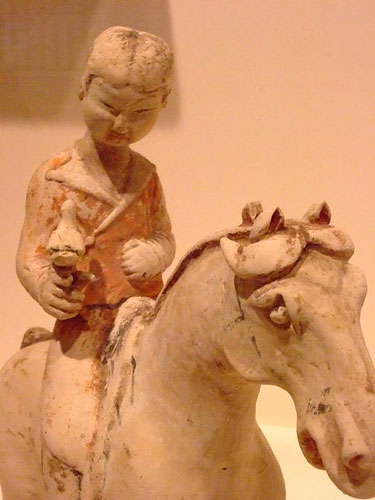
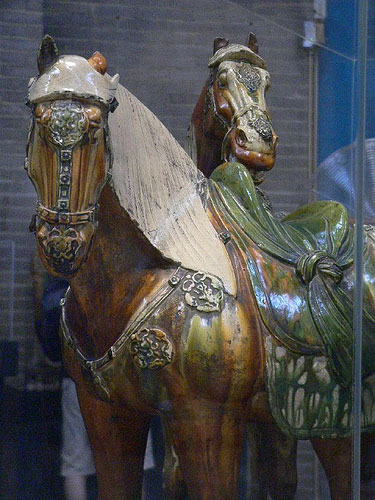
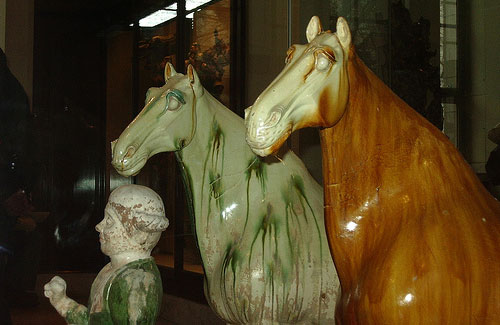
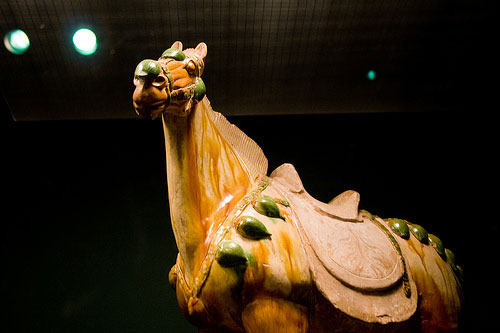
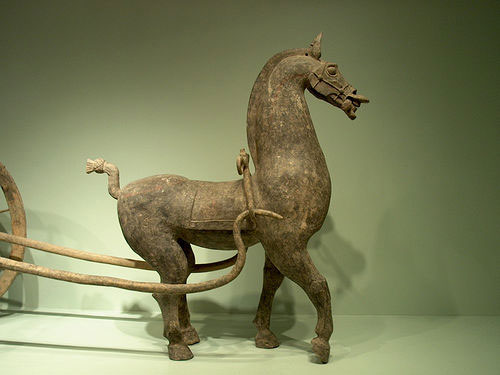
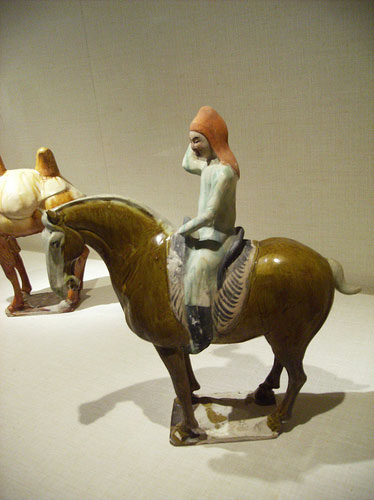
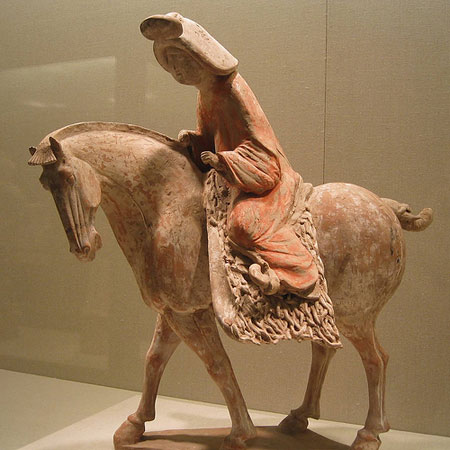
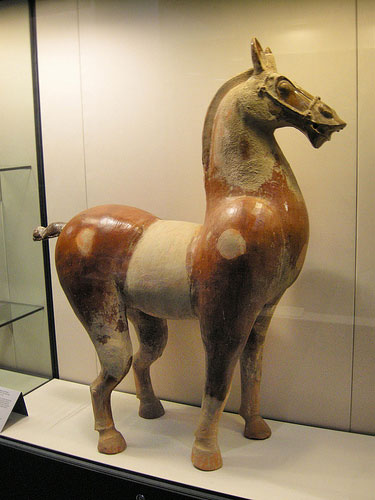
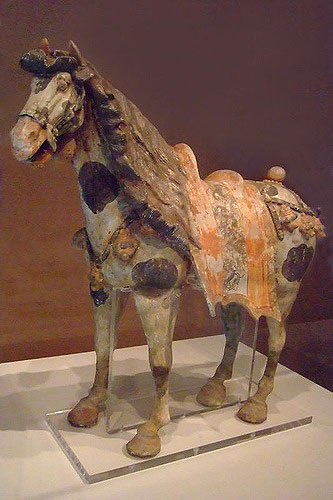
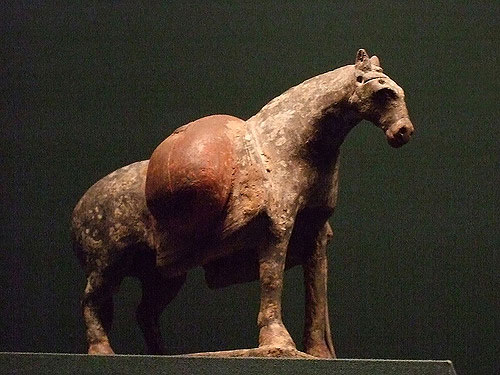
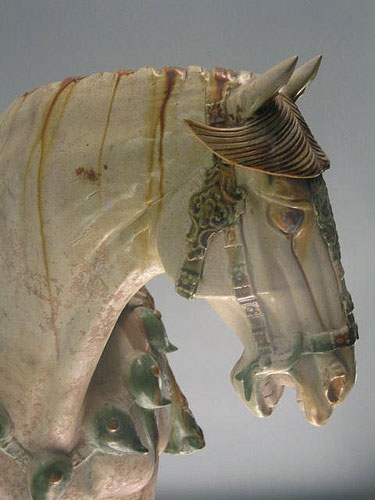
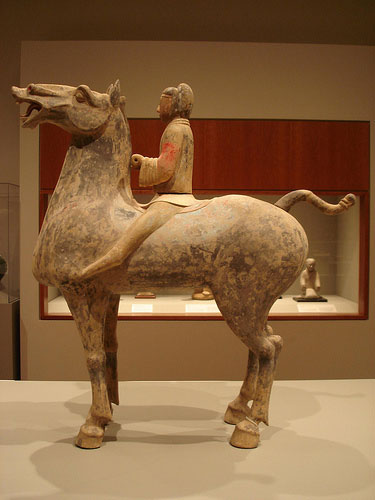
Well Made Art
It’s truly amazing how well some of these statues have stood the test of time. The Chinese have proven themselves to be master artists a beautiful and durable craft. If you like horse art, be sure to check out some of the horse artists The Equinest has been featuring recently.

Hello, Why is the Largest Chinese Tang Dynasty Horse
Geoglyph found in Wyoming/Colorado? Check this out.
Run the arrow over the satellite image to get the
computer overlay of what the image originally looked
like.
Hendon Harris More images available and forthcoming.
There are a growing number of us who believe in a fairly recent Asian/Native American connection. Asians used distinctive saddle technology which
included high cantles and pommels and decorative
breast and rear straps. The rear strap that fit right
under the horses “groomed and shortened” tail is called the “crupper’. I don’t know of any other
civilizations that used this style yet it shows up
on Native American saddles. Google Native American
Saddles and then go to http://www.theequinest.com/images/saddle-3.jpg to see
an almost identical saddle. They both have “cruppers”
Its a mystery! For a view of an ancient Chinese horse
in North America with an Asian saddle complete with
stirrup and a “crupperbelt” visit http://www.chinesediscoveramerica.com/geoglyphsmaps/the-harris-horse/ For more information on this topic
read “Riding Astride and the Saddle in Ancient China”
by Chauncey S. Goodrich the expert on this subject.
Hendon Harris
The common wisdom is that there were horses in the ancient Americas
but for some unknown reason Native Americas developed an appetite
for horse meat and subsequently ate the American horse into extinction.
This story doesn’t make sense for several reasons. If there ever were
a people who knew how to manage their natural resources the Native
Americas would be toward the top of the list. They worshipped nature.
Why would they eat any animal into extinction particularly the horse that
the whole world at the earliest times associated with transportation as
recently as the early 20th century. Let’s give the ancient Native Americans more credit than that. The reason this theory came about is
because ancient N. American horse bones have been found with arrows
In them. Because horses reportedly disappeared and horse bones with arrows in them were found it is assumed that they were hunted to
extinction. I have another theory because although wheels were known
in the ancient Americas for their use as religious symbols and for toys
they were NEVER used for labor. That’s amazing because the use of
the wheel for labor is it’s most practical use. My theory is that immediately after the Chinese Shang Dynasty the Zhou Dynasty chased
the Shang people fleeing China to N. America and not only killed as
many as they could but also destroyed the local population. In order
to prevent this population ever being a threat again they killed all their
horses and outlawed the ordinary uses of the wheel. This was before
horseback riding during the height of the use of chariots in warfare.
With no horses and no wheels the local population could no longer
Build chariots and would no longer be a threat
the natives when they saw the horse didn’t know what it was and as they did the buffalo and before that, mammoths, the indians did what they knew to do…provide, thrive, and survive. Whether or not they ate the horse into extinction is still being debated, however, i heard it that they came to and saw the horse as more than food. unlike the buffalo, the horse, could be ridden, tamed and became a great asset to the native americans as almost all native american paintings describe.
Is the suggestion that Native American saddle styles and horsemanship
techniques bear a remarkable similarity to Asian styles hard for you to
believe and accept? This may make it a little easier. Chess and the chessboard
originated in either India or China. Either way it came from Asia. Then why are huge chessboard grids being located in numerous locations in western North America. Google: “Homer H Dubs Chessboard Grid Priest Lake” This site as large and as beautiful as it is but one of numerous others. The ones east of Flathead Lake are one mile square each which is 640 acres. The complete ancient Chinese Go (Weiqi) board just south of Burnstick Lake Alberta is2 miles by 2 miles. Thats four square miles of 2560 acres. The squares in that grid are 10 acres each so the complete set is 256 rectangular squares. There are also these same huge patterns south of Howard Prairie Lake in Oregon. Check these out for yourself via “google maps”.
Just in case someone suggests to you that this was the work of space aliens
simply ask them why “these space aliens” had such fondness for Asia that they only crafted symbols that had a long and established cultural and religious record in Asia. These items included Phallic Symbols, Manjis (the swastika), mandalas (sand paintings) and customs such as The Seven
Step Seven Vow Wedding ceremony from ancient India practiced today by
Native Americans as their very own most common wedding tradition.
Still having a problem believing that pre Columbian Asians left a significant footprint in pre Columbian
America? Google: “Hwui Shan-Land of Women” “Buddhist Symbols and Customs North America”
“The Ghost Dance: Native American Buddhism” “Mandalas, Mantras, Manjis and Monuments” and
“Were the Anasazi People Buddhists?” I believe these influences included horses and related gear
that still shows up on Native American horses.
I realize that it’s probably hard to believe that the huge image of a Tang Dynasty style
horse that has been named ‘Hendon’s Horse’ is real without evidence that the
supposed Chinese creators of this geoglyph had highly advanced artistic and
scientific skills that have not been previously acknowledged and discussed.
Google: “Forward Intersection-Zilan Wang”. This online scholarly article clearly
demonstrates that the ancient Chinese had documented access to extremely
advanced mapping and surveying skills long before it was know in the west.
Forward Intersection, Resection and Triangularization are thought to be of recent
discovery. From these recorded ancient Chinese texts this is obviously not the case
because the Chinese were using these techniques hundreds of years before Christ.
That shouldn’t be hard to accept because the Chinese were predicting Solar Eclipses
as far back as 2300 BC. The Triangularization of heavenly bodies using the principles
of extremely advanced scientific skills mentioned above is The Only Way This Would Have Been Possible.
I am certainly not the first westerner to be aware of this.